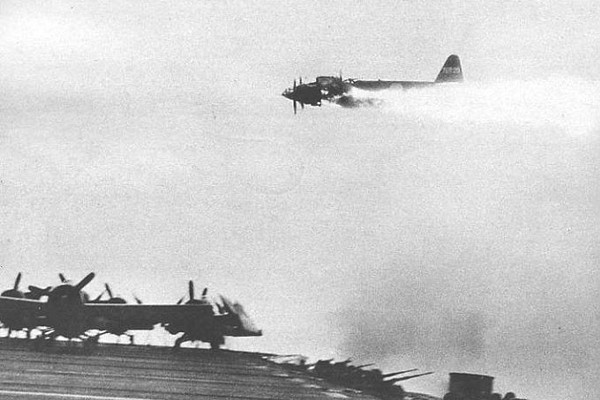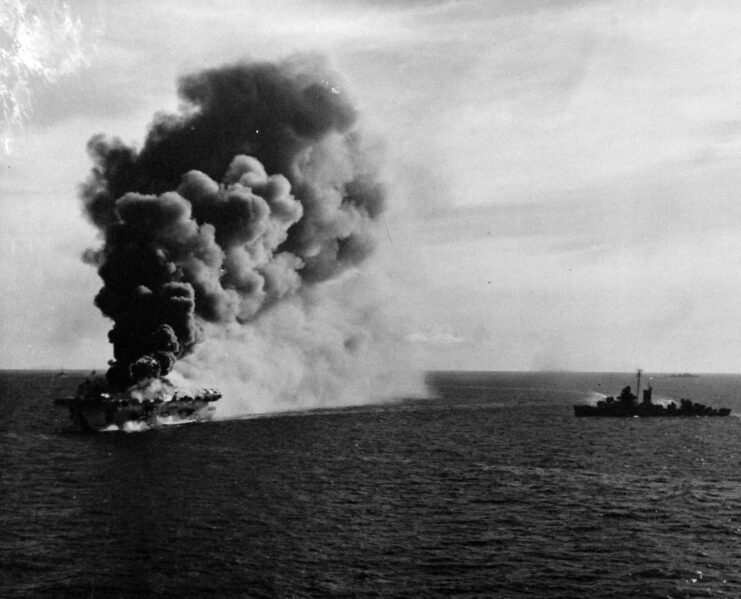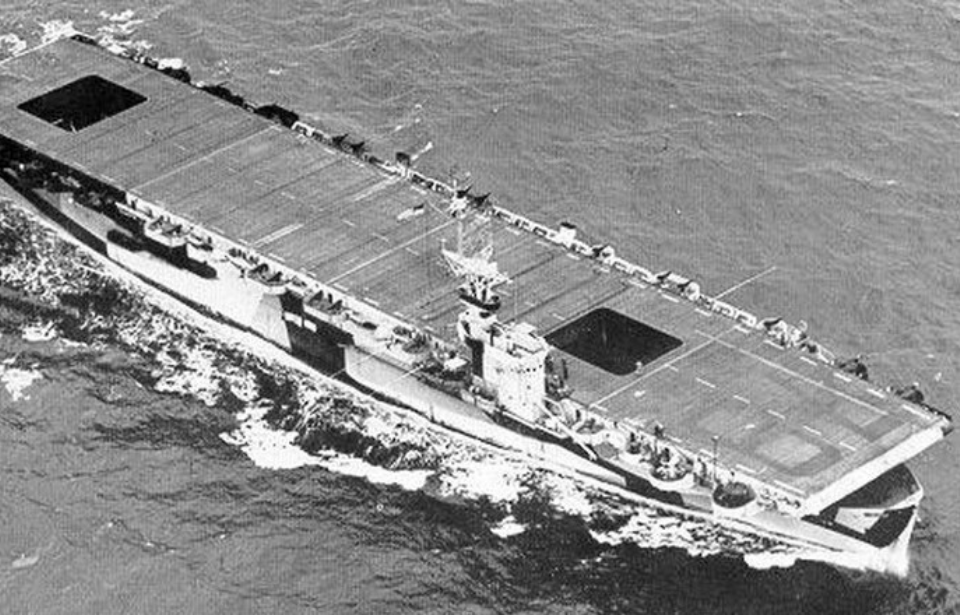The Naval History and Heritage Command (NHHC) has confirmed the location of the wreck of the USS Ommaney Bay (CVE-79) in the Sulu Sea, off the coast of the Philippines. The escort carrier, which served the US Navy during the latter stages of World War II, was sunk by Japanese kamikaze aircraft during the Philippines Campaign of 1944-45.

Writing in a press release, the Naval History and Heritage Command’s Underwater Archaeology Branch explained that it used a combination of survey information and video footage to confirm the wreck as belonging to the USS Ommaney Bay.
“Ommaney Bay is the final resting place of American Sailors who made the ultimate sacrifice in defense of their country,” NHHC Director and retired US Navy Rear Adm. Samuel J. Cox said in the release. “This discovery allows the families of those lost some amount of closure and gives us all another chance to remember and honor their service to our nation.”

The USS Ommaney Bay was a Casablanca-class escort carrier that took part in action in the Pacific Theater not long after being commissioned in February 1944. Being sent to assist in the Mariana and Palau Islands Campaign, she was later assigned to Taffy 2 (TU 77.4.2) for the invasion of Leyte, during which the vessel launched airstrikes alongside other carriers as part of the Battle off Samar.
Ommaney Bay participated in additional action throughout December 1944 and into the following month. On January 4, 1945, she was transiting through the Sulu Sea, off the coast of the Philippines, when her radar detected 15 enemy aircraft flying nearby. The group split into two, with half targeting the rear of Task Group 77.4.1, with whom the escort carrier was serving, and the rest of the aircraft flying toward the center of the ships’ formation.
While American fighters took off to intercept the approaching enemy, one particular kamikaze, a Yokosuka P1Y, made it through and flew directly toward Ommaney Bay. The bomber went across the carrier’s superstructure on the forward starboard side and released two munitions. One penetrated the flight deck, causing the aircraft down below to blow up, while the second led the fire main on the second deck to explode.
The heat coming from the fires made it nearly impossible for nearby vessels to assist Ommaney Bay. The order to abandon ship was given, and the ship was ultimately scuttled by the USS Burns (DD-588). Of the men serving aboard, 93 lost their lives, along with two others from a destroyer assisting in the rescue of Ommaney Bay‘s crew.
Among the information used to identified the USS Ommaney Bay‘s wreck was data gathered by Sea Scan Survey and DPT Scuba, both of which are Australian-based diving firms.
Speaking with The Washington Post, Cox said, “There’s no other escort carrier anywhere near there, so we were pretty sure that that’s what is was and where it was. Then this latest group was able to get down there and find enough features so that there’s absolutely no doubt.”
More from us: Royal Navy Submarine Buried Beneath British Park? Experts Say It’s Likely
According to the press release from the Naval History and Heritage Command, Ommaney Bay‘s wreck is considered a war grave. “The wreck represents the final resting place of Sailors who gave their life in defense of the nation and should be respected by all parties as a war grave,” it wrote.
